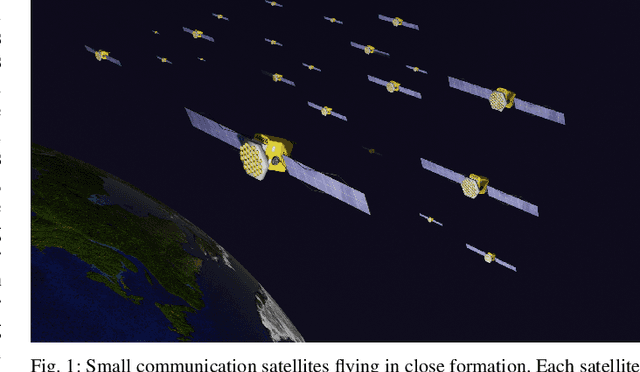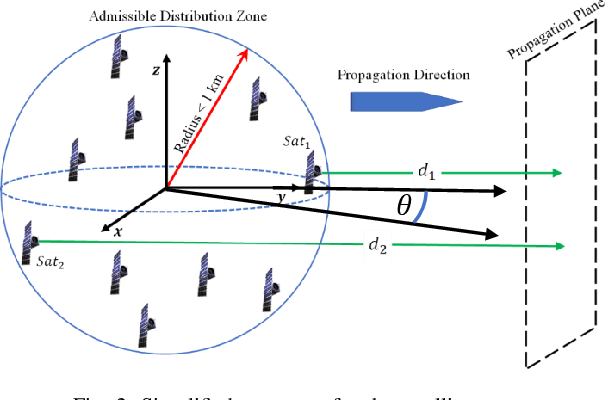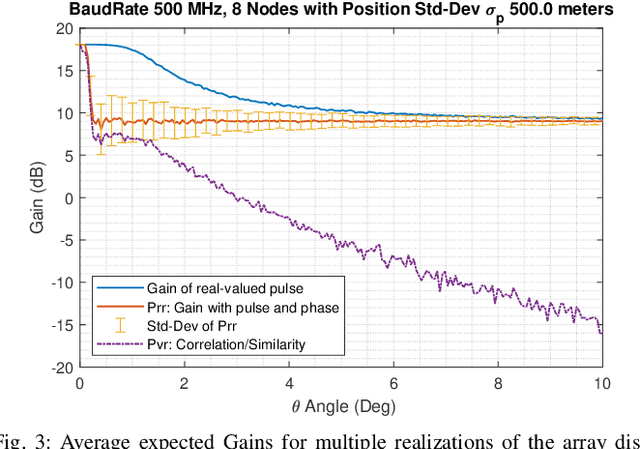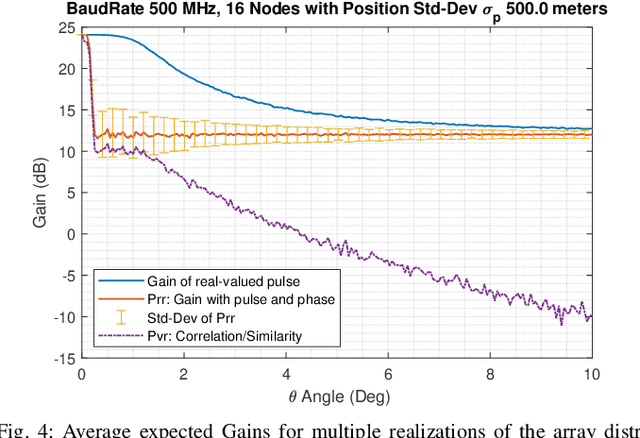Harnessing the Power of Swarm Satellite Networks with Wideband Distributed Beamforming
Paper and Code
Jul 10, 2023



The space communications industry is challenged to develop a technology that can deliver broadband services to user terminals equipped with miniature antennas, such as handheld devices. One potential solution to establish links with ground users is the deployment of massive antennas in one single spacecraft. However, this is not cost-effective. Aligning with recent \emph{NewSpace} activities directed toward miniaturization, mass production, and a significant reduction in spacecraft launch costs, an alternative could be distributed beamforming from multiple satellites. In this context, we propose a distributed beamforming modeling technique for wideband signals. We also consider the statistical behavior of the relative geometry of the swarm nodes. The paper assesses the proposed technique via computer simulations, providing interesting results on the beamforming gains in terms of power and the security of the communication against potential eavesdroppers at non-intended pointing angles. This approach paves the way for further exploration of wideband distributed beamforming from satellite swarms in several future communication applications.
 Add to Chrome
Add to Chrome Add to Firefox
Add to Firefox Add to Edge
Add to Edge